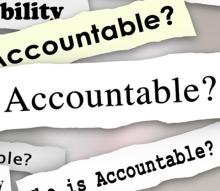Post written by guest blogger Angie Snyder, PsyD, Wellness Advisor
Prior to the pandemic, loneliness was an epidemic. More and more people reported feeling lonely, isolated, disconnected - married people, single people, people living with others or alone. Then, just over one year ago, with the onset of the COVID pandemic, factors collided to increase an already concerning phenomenon. In this turbulent time of uncertainty, loss, and fear, just when people needed more than ever to feel connected, there was an increase in isolation. While the implementation of social distancing guidelines has been necessary to maintain physical health, it has taken a toll on people’s mental well-being. People have lost their ability to spend time in-person with others in their families, social networks, religious communities, and professional organizations.
The experience of being lonely has real health consequences. Dr. Vivek Murthy, a former Surgeon General and physician who has been nominated by President Joe Biden to become the 21st Surgeon General, recently wrote a book entitled Together: The Healing Power of Human Connection in a Sometimes Lonely World. Researcher and teacher Brene Brown interviewed Dr. Murthy for one of her podcasts and referenced a study described in his book that found “people with strong social relationships are 50% less likely to die prematurely than people with weak social relationships. Even more striking, she [the researcher] found that the impact of lacking social connection on reducing life span is equal to the risk of smoking 15 cigarettes a day. It’s greater than the risk associated with obesity, excess alcohol consumption, and a lack of exercise.” (1)(2)
You are NOT alone in feeling alone, and there is nothing wrong with you for feeling lonely. Many trainees started a new job with the NIH during the pandemic, and/or moved to a new town. This is a stressor at any point in life, but when one isn’t able to work in the lab with the usual number of colleagues, when one hasn’t been able to go out after work for a drink or a coffee, or when one can’t join a gym or go to yoga to meet other like-minded people, this limits the opportunity to make new friends or perhaps meet someone to begin a romantic relationship. Even trainees who are married or live with another also experience loneliness. Their roommate or partner might work different hours than they, leaving them alone for long stretches of time. Married or partnered pairs might be so busy working and tending to family and work responsibilities that there is no time to connect. Others may have a deep and satisfying relationship with their partner but feel lonely without their usual friend or work community.
Given the real health consequences of loneliness, it is important to pay attention to yourself to see if you might be lonely, and then consider steps you can take to reduce this experience. In his book, Dr. Murthy wrote that researchers have identified three dimensions of loneliness. 1) Intimate or emotional loneliness, which is “the longing for a close confidant or intimate partner with whom you share a deep mutual bond of affection and trust;” 2) Relational or social loneliness, which is the “yearning for quality friendships, social companionship and support;” and 3) Collective loneliness, which is “the hunger for a network or a community of people who share your sense of purpose and interests.” (1)(2) If you sense that you might be feeling lonely but you haven’t been sure why, it could be useful to think about each of these dimensions and commit to devoting more time to building meaningful connection in that arena.
A recent OITE support group that I led for scientists in training was for people who recognized feeling lonely during the pandemic. I structured the group in a way to help people not only connect, but also to learn and practice ways to improve the quality of their connections. This included having members share: 1) what they were struggling with in their lives while others practiced listening with compassion, 2) what they were grateful for in their lives, and 3) what they were celebrating about their accomplishments – small or large. These practices helped members experience deeper, more genuine ways of being and communicating with each other that enabled them to feel more connected, and a little less lonely. As your opportunities to spend time with people in-person begin to increase this year, I encourage you to experiment with these deeper ways of connecting with your romantic partner, family members, friends, and colleagues to see if this decreases your loneliness, and increases your experience of quality connectivity.
If you are a trainee at the NIH, please also consider joining a support group - Connecting in a Time of Loneliness. This group will be held on Wednesdays 3 p.m. EDT beginning May 5, 2021. If you are interested in joining, please email OITE-Wellness@nih.gov.
References
- Episode Attribution - Brown, B. (Host). (2020, April 21). Dr. Vivek Murthy and Brene on Loneliness and Connection.[Audio podcast episode]. In Unlocking Us with Brene Brown. Cadenc13. https;//brenebrown.com/podcast/dr-vivek-murth-and-brene-on-loneliness-and-connection
- Murthy, V. (2020.) Together: the healing power of Human Connection in a Sometimes Lonely World. HarpersCollins Publishers.




